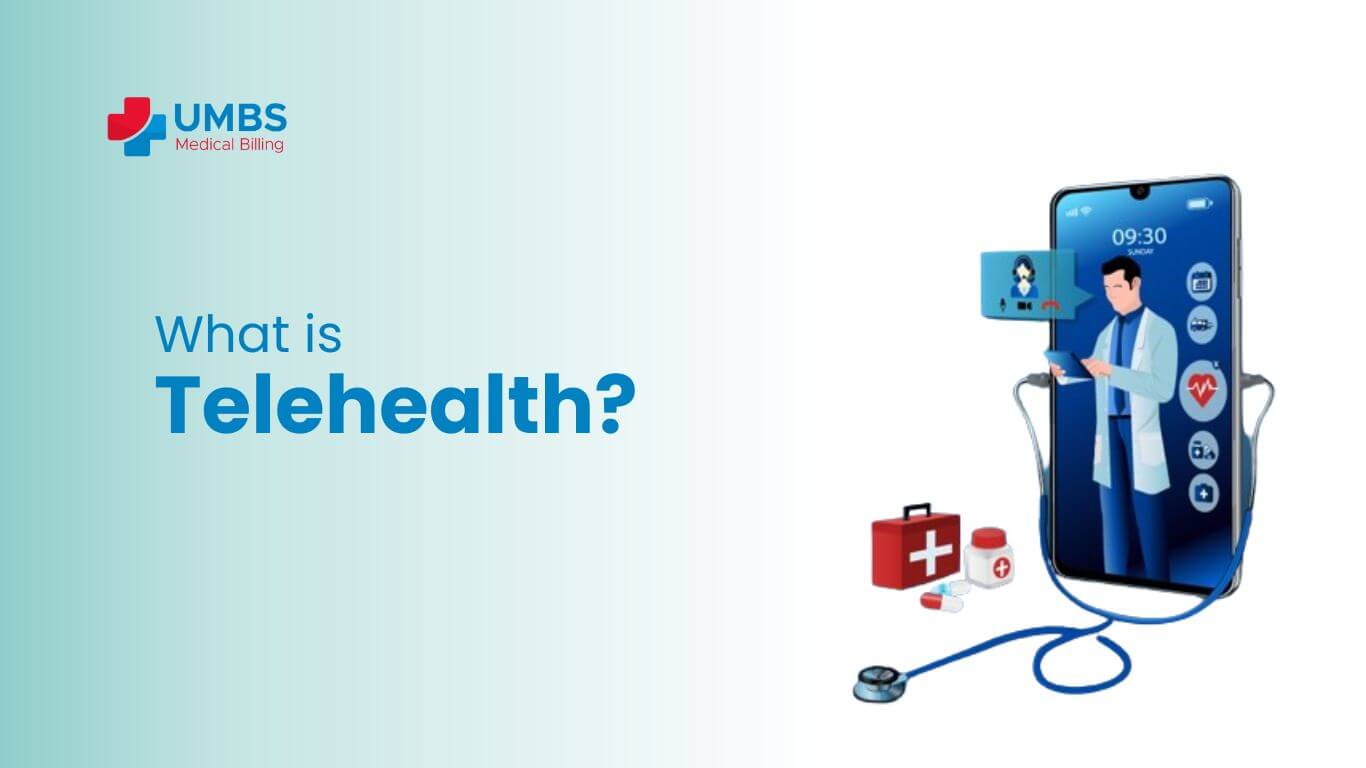As technology has advanced in recent years, you can now access healthcare with just a click away. Telehealth allows you to meet with healthcare experts without leaving your home. Whether it is just a routine checkup or a one-to-one appointment, telehealth brings healthcare right to your doorstep.
Read on to explore what telehealth is, different types and services, challenges faced, and much more.
What is Telehealth & How Does Telehealth Work?
Telehealth is a term that refers to the use of technology to communicate with health experts remotely. Different technologies may be used which could include computers, tablets, smartphones, etc. It can also point to technology that a healthcare professional uses to improve any medical services.
Telehealth services work by virtually connecting you to healthcare experts. To use these services, you need a smartphone/laptop, an internet connection, and sometimes a web camera. Some healthcare providers may request you to download their custom application. You can also track your health using technology to be able to share important information like sugar levels with your doctor.
Telehealth vs Telemedicine: How Do They Differ?
Many people, even experts, often confuse telehealth with telemedicine. They may seem similar but surely have a different meaning.
Telehealth is a broad term and it covers all health services offered remotely. Whereas telemedicine only refers to remote clinical services such as consultations and diagnosis. Unlike telemedicine, telehealth includes non-clinical services like training and health education.
Four Fundamental Components of Telehealth
Experts have categorized telehealth into four different types or components. Let’s explore each of them in detail and evaluate what role they play in telehealth.
Live Video
This is the most common type of telehealth in which the interaction between the patient and the healthcare expert occurs over video. Some also call this “real-time” telehealth as it is the closest alternative for one-to-one physical meetings.
Live video is utilized in treatment, diagnosis, and consulting services. You can use various devices to initiate live video such as video scopes, in-built cameras of laptops, or even video conferencing units. To get the best results from live video interaction, it is important to use display devices such as LCDs, tablets, monitors, LEDs, etc.
Store and Forward
In instances where live video is not needed or is unavailable, store and forward methodology is used. This method includes the transmission of recorded health data through a secure system to a healthcare specialist.
Upon receiving the recorded health information, the healthcare expert reviews the case without the need of the patient to be physically present. After evaluation, the expert sends back the treatment suggestions to the patient.
Mobile Health (mHealth)
MHealth apps involve using mobile devices to promote health services and share information. Some of the app examples could include health reminders, fitness tracking, and blood pressure monitoring. These apps can remind you when to take medications and even warn about the side effects of medicines.
Over the years, these apps have helped to share content about healthy lifestyles with a wide audience. A prominent instance is fitness apps which help you to track progress towards your fitness goals. It also gives you a comprehensive overview of your health.
Remote Patient Monitoring (RPM)
RPM lets healthcare professionals monitor patients remotely using devices that collect health data such as heart rate and blood sugar levels. This is especially beneficial for diagnosing chronic conditions or managing instances of post-operation recovery.
Patients with diseases such as diabetes can use these devices to monitor their health and send their data to healthcare providers. It is also commonly used by the elderly who prefer remote treatment rather than physically going to the hospital.
What services can be provided using telehealth?
Telehealth services can be used to accommodate different care options. Each type of service is important to meet different circumstances and specialties.
General HealthCare Consultations
Telehealth can help you improve your access to routine checkups. You can get feedback from doctors right from your home. These services can work for different fields including chronic diseases, mental health, and dermatology.
Urgent Care
With Telehealth, you can get quick medical responses to urgent issues such as urinary infections. This service is eligible for conditions that need medical attention but are not life-threatening. It reduces the need for physical visits which may take much longer and could be sometimes inconvenient. Patients who are in less accessible regions can easily utilize telehealth to get urgent and quick evaluations of their health issues.
Mental Health Care
Telehealth supports mental health care through remote counseling and therapy sessions. Regardless of your location, these sessions can be conducted from anywhere. This service makes sure you always have the best mental health care resources at your disposal.
Physical Therapy
You can also receive physical therapy using Telehealth. Experts can connect with you remotely and guide you through different exercises. Such therapy works best for those in recovery stages who cannot visit therapy facilities frequently.
Major Challenges in the Telehealth Sector
Although Telehealth has made healthcare a lot more accessible, some challenges in this sector need to be addressed. Let’s evaluate some of the key challenges faced by the telehealth sector.
Reimbursement
A fundamental challenge is the limited reimbursement options available in telehealth services as compared to on-site services. Although many states have passed payment parity laws, there is no specific body to enact them. However, as telehealth services expands, there is a chance that more reimbursable codes will be made available for this sector.
EMR Integrations
The complete integration of Electronic Media Records or EMR within the telehealth services is a time and cost-intensive task. When the EMR can not be integrated, the need for double documentation arises. Such extensive documentation may also result in human errors and a lack of compliance.
Access of Internet
In areas with limited internet access, particularly rural areas, telehealth services can not be offered effectively. This obstructs the underprivileged communities from easily accessing healthcare remotely, and at times, even they can’t access traditional care. In some instances, patients may have internet access but do not have the costly health monitoring devices. Hence, they could be ineligible to receive some of the telehealth services.
License Requirements
Every state within the US has its license requirements which must be strictly followed. As telehealth services are virtual, healthcare providers can easily confuse the license regulations between different states. For the healthcare experts looking to provide telehealth services across the US, they need to follow license policies within the specific states they are operating in.
How is AI Impacting Telehealth?
There are many different technologies used by healthcare professionals that have AI capabilities. With the use of AI, experts can easily diagnose their patients’ conditions and suggest the relevant treatments. Let’s explore further!
Evaluate Vital Signs
AI devices, with the help of machine learning, can be used to read the vital signs of the respective patients. In the case of abnormal readings, the AI devices alert the healthcare providers immediately. These AI devices usually evaluate a patient’s data from heart monitors, medical wristbands, cuffs, and other such equipment.
Image Analysis
AI uses patients’ current and historical data to diagnose their conditions with utmost accuracy. This helps the AI devices to effectively interpret the outcomes of medical imaging otherwise known as radiology.
Improved Engagement
With AI chatbots, patients can easily get information regarding telehealth services. AI apps also help in scheduling appointments and remind patients about their upcoming sessions. Moreover, AI can also personalize the patient’s experience by giving suggestions based on their medical data and records.
Final Thoughts
Whether you are elderly, physically disabled, or in the post-recovery stages, telehealth has made healthcare accessible to everyone. With Telehealth, you can get the best medical services without ever leaving your home. As technology evolves with AI, telehealth will become more effective and will include more care options around the globe.
If you are looking to improve the medical billing services of your healthcare practice, UMBS Medical Billing is the perfect option for you. Contact us today and get access to 70+ certified medical billers and coders to transform your medical billing solutions!
FAQs
Who is ineligible for telehealth services?
Patients who have life-threatening diseases or are severely mentally ill and can pose harm to themselves or others, may not be eligible for these services. Telehealth services are only suitable for patients who can access resources on their own and have the required discipline to follow the healthcare provider’s instructions.
Why do physicians dislike telehealth?
Although many health experts favor telehealth, physicians are not one of them. A large segment of physicians think that it is very difficult to examine their patients remotely as compared to on-site visits. They believe that the quality of healthcare gets compromised when they monitor their patients through telehealth.
Which state in the US uses telehealth the most?
By far, California uses the most telehealth services in the U.S. This is outstanding digital infrastructure, assisting laws and wide internet access.






